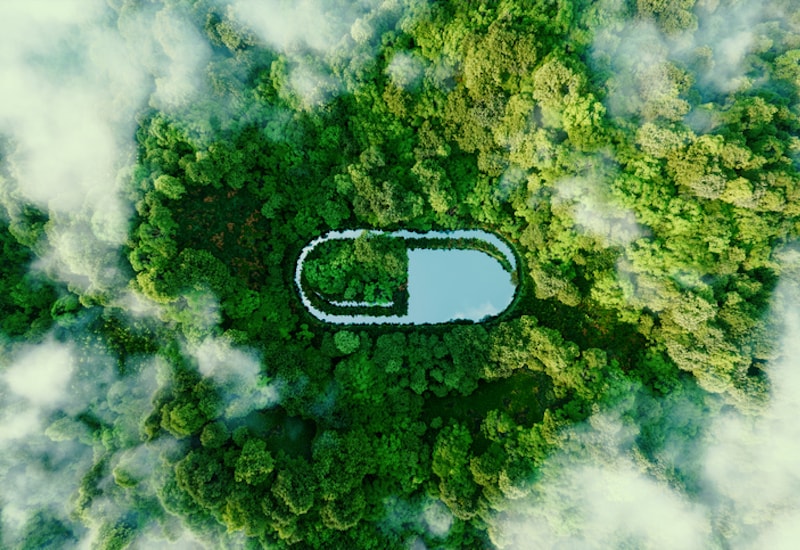Thursday, July 27, 2023
The pharmaceutical industry seeks to reduce its emissions by recycling and the eco-design of packaging
Source: Copilsa
Amoxicillin, ibuprofen, contraceptive estrogens, benzodiazepines, bezafibrate, carbamazepine and paracetamol are some of the drugs prescribed in health centers and hospitals to treat patients' health problems, and in many cases they end up actually damaging the planet's health. These are just a few of the more than 4,000 active ingredients that are dispensed worldwide, and that end up leaving their mark on soil and water.
These emerging pollutants account for 25% of the carbon footprint generated by the healthcare sector. Emissions generated both pre-and post-consumption. In 2020 alone, according to a study led by Spaniards Gorka Orive from the University of the Basque Country and Unax Lertxundi from the Osakidetza-Basque Health Service that was published in Science of The Total Environment, 4,500,000,000,000 (or 4.5 trillion) doses of drugs were administered, not counting those used in veterinary practice.
Since the 1970s, scientists have been detecting the presence of drugs in aquatic ecosystems: antibiotics, analgesics, anti-inflammatory drugs, antihistamines, contraceptive estrogens, clofibrate to treat cholesterol and beta-blockers for high blood pressure, to name but a few. Pharmacological contamination is now so pervasive that up to 631 active ingredients have been detected in 71 countries. Moreover, if only the greenhouse gas emissions generated by the pharmaceutical industry were counted, it would still be the fifth most polluting industry in the world.
"The paucity of peer-reviewed literature on pharma emissions may lead you to think that it is a relatively green industry," said Lotfi Belkhir and Ahmed Elmeligi, researchers at McMaster University in Canada.
Research conducted by McMaster University in Canada revealed that the world's leading pharmaceutical companies generate more pollution than the automobile industry. "The focus on reducing emissions has mainly been centered on industrial sectors, such as mining, energy and the automotive industry; the carbon footprint of the healthcare industry, and more particularly the pharmaceutical sector, has received little or no attention in peer-reviewed literature," warn Lotfi Belkhir and Ahmed Elmeligi, authors of the research. "The paucity of peer-reviewed literature on pharma emissions may lead you to believe that it is a relatively green industry," they add.
However, "the sustainability of production plants is a priority issue for society and for the sector's managers," clarifies Farmaindustria in its report Industrial implementation of the pharmaceutical sector in Spain. "We have facilities that use very advanced and highly specialized technologies, which also include sustainability and corporate social responsibility strategies to have a very positive impact," says Ángel Luis Rodríguez de la Cuerda, secretary general of the Spanish Association of Generic Medicines (AESEG).
4,500,000,000,000 doses of medications were sold in 2020 worldwide.
According to data from the sector's employers' association, the pharmaceutical industry is working to improve its energy use by increasing energy efficiency and the use of renewable energies and generating its own energy. At present, almost 70% of the total energy used by pharmaceutical plants is from renewable sources. However, "prevention is better than cure, both in healthcare and for the environment. In the industry we are working to reduce waste generation as much as possible, because the best kind of waste is that which does not exist," said the deputy director general of Farmaindustria, Javier Urzay Ramírez, at the conference Together for Health and the Environment: Green Medicines.
Waste that instead of ending up in the garbage or down the drain, is dealt with in pharmacies. Last year, an average of 104.4 grams of empty or leftover medicine containers per inhabitant were collected in pharmacies, "67.8% of the packaging materials collected were recycled," said Sigre in a statement. "The planetary emergency has made the population increasingly aware that human beings cannot be healthy on a sick planet," says Humberto Arnés, president of Sigre.

In the last two decades, "environmental awareness has increased in Spain, together an understanding of the importance of properly disposing of empty containers or expired medicines," Sigre points out. Almost nine out of ten households in Spain have already included the recycling medicines as part of their good environmental habits. In the 22 years that Sigre has been in existence, it has avoided the felling of more than 197,000 trees, saved 371 million liters of water (the amount needed to fill 148 Olympic swimming pools), reduced energy consumption by 402 million kWh, and saved 64.2 million liters of oil.
Eco-design of medicines
In addition to these environmental contributions, 1,400 tons of CO2 emissions per year are avoided thanks to the reverse logistics system used in pharmaceutical distribution for the collection of waste deposited at the Sigre Point, taking advantage of the same route used by the distributor to deliver new medicines to the pharmacy. However, one of the most important initiatives is focused on the 'slimming down' of medicines.
In recent years, laboratories have implemented around 3,400 eco-design initiatives, "thus multiplying the savings in raw materials and energy required for their production, transport and subsequent environmental management of the waste generated," Sigre points out. In this way, the pharmaceutical industry has managed to reduce the average weight of packaging by more than 25% in the last 20 years Furthermore, 500 million units of the drugs marketed in Spain each year (one third) have packaging that has been improved in some way to make it more environmentally friendly.
Last year alone, the pharmaceutical industry adopted 165 eco-design measures that were applied to almost 100 million packages of medicines (94.8 million to be precise), saving up to 1,700 tons in materials.
¿Te ha parecido interesante?





